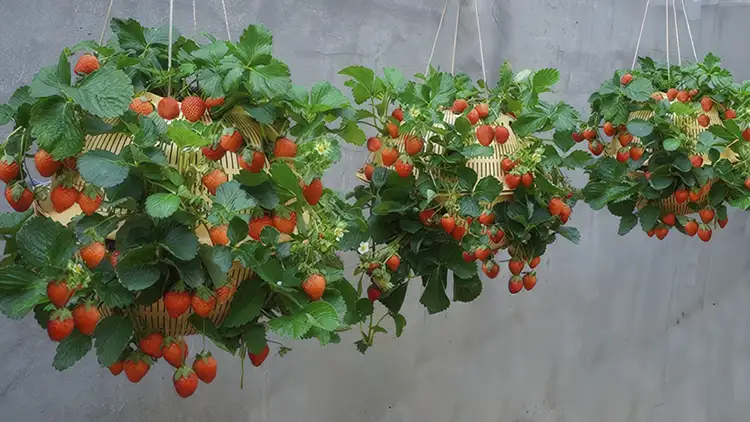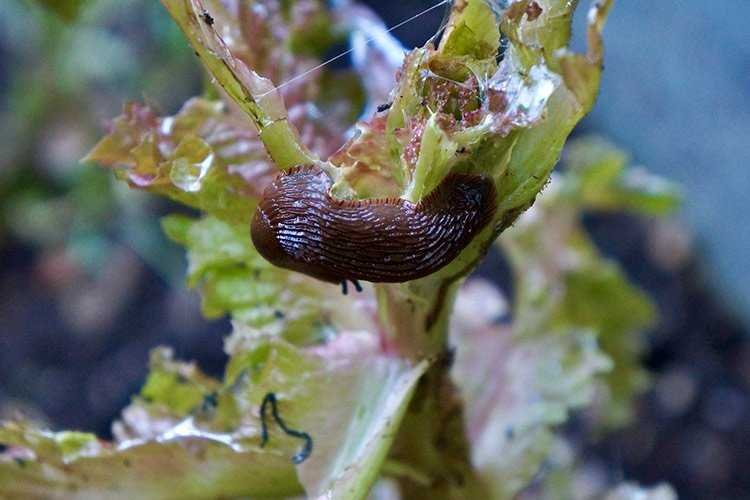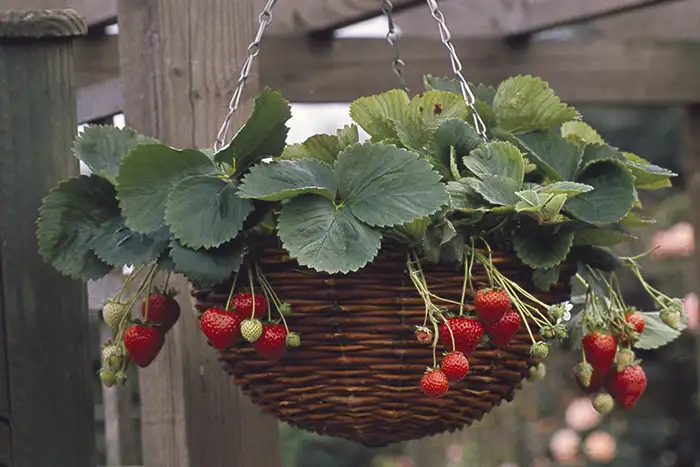Beautiful Plants For Your Interior
How to Grow Strawberries in Hanging Baskets: A Complete Guide

Hello there, fellow gardeners! If you’re keen on enjoying the sweet taste of home-grown strawberries, learning how to grow strawberries in hanging baskets is a brilliant way to make the most of your garden, balcony, or patio, and it’s surprisingly easy to get started.
If you’re in the UK and keen to grow your own strawberries but are short on space, hanging baskets are the perfect solution! You can get started easily, and I’ve got all the information you need to be successful in growing your own tasty strawberries.
- I’ve found that hanging baskets save space, are less prone to slugs and pests, and are easy to move to protect them from the elements.
- I will tell you what varieties to choose for a long harvest, and which ones to avoid.
- I’ll guide you on the materials you need, including the best compost and liners, and how to plant them up.
- I’ll also give you the lowdown on how to care for your plants and what to do about watering, feeding, and overwintering.
Read on, and I’ll give you all the tips and tricks for a successful strawberry harvest!
Hanging baskets are not only a visually appealing way to grow strawberries, but they also offer several practical advantages. Here’s why they’re such a good idea:
- Space Saving: Perfect for those with small gardens, balconies, or even just a small patio. If you’re short on space, hanging baskets are an excellent solution.
- Pest Control: By keeping your strawberries off the ground, you’ll drastically reduce the risk of them being munched on by slugs and snails. Hanging baskets can also help prevent some soil-borne diseases.
- Protection from Wildlife: Hanging baskets can also protect your precious berries from being eaten by deer and other wildlife.
- Mobility: Hanging baskets are easy to move around, meaning you can protect your plants from harsh weather, such as heavy rain, strong winds, and frost. You can even bring them indoors if the weather gets really bad.
- Easy Harvesting: Picking strawberries from a hanging basket is much easier as they’re growing at a comfortable height. No more bending or crouching!
- Air Circulation: Growing strawberries in hanging baskets allows for good air circulation, which is essential to prevent mould and other diseases.

How to Grow Strawberries in Hanging Baskets: Slugs damaged will be drastically reduced with your strawberries in hanging baskets.
Choosing the Right Strawberry Varieties
Not all strawberry plants are created equal, and some varieties do better in hanging baskets than others. When choosing your plants, look out for these types:
- Day-Neutral/Everbearing Varieties: These are your best bet for a long harvest. They will keep producing fruit throughout the growing season, from summer well into the autumn. Some reliable day-neutral / everbearing varieties for the UK include:
- ‘Tribute’
- ‘Mara des Bois’
- ‘Albion’
- Alpine Strawberries: If your growing area is a bit shady, Alpine strawberries are a good choice as they thrive in partial shade. They’re also known for their compact size and long fruiting season. Try these:
- ‘Mignonette’
- ‘Rugen Improved’
- ‘Yellow Wonder’ (which produces yellow berries)
- Trailing Varieties: Look for plants that have a trailing habit, which means they will spill beautifully over the sides of your baskets. Here are a few examples:
- F. x ananassa ‘Delician’
- F. x ananassa ‘Fresca’
- F. x ananassa ‘Just Add Cream’
- F. x ananassa ‘Ostara’
- F. x ananassa ‘Temptation’
- F. x ananassa ‘Toscana’
- Avoid June-Bearing Varieties: These tend to produce a lot of runners and are better suited to growing in the ground.
- Pretty Flowers: Some varieties also have beautiful flowers, which adds to their appeal in a hanging basket. For example, ‘Just Add Cream’ has pretty pink flowers.
How to Grow Strawberries in Hanging Baskets: What You’ll Need
To set up your strawberry hanging baskets, gather these supplies:
- Hanging Basket: A wire hanging basket is ideal as you can plant through the sides, but plastic ones with water reservoirs are useful too. Aim for a basket that’s 15-35cm deep.
- Liner: Use a coconut fibre liner to help the soil retain moisture, or you can use peat moss.
- Compost: Choose a good quality multi-purpose, peat-free compost. It’s better for the environment and your plants.
- Water Retention: Adding water-storing gel or water retention granules will help prevent the baskets from drying out too quickly. Coir is another option.
- Fertiliser: A controlled-release fertiliser added to the compost at planting is a good start, then you’ll want to use a liquid potash feed such as tomato feed later in the growing season.
- Strawberry Plants: Pick your favourite strawberry plants. You can have your own plants grown from seed, buy plug plants, or use runners from existing plants.

How to Grow Strawberries in Hanging Baskets: Trailing strawberry plant varieties are best for hanging baskets.
How to Plant Your Strawberries in a Hanging Basket
Follow these steps to plant your strawberries in the hanging basket:
- Prepare the Basket: Line your basket with the fibre liner, ensuring it fits snugly. Then, fill the bottom third of the basket with compost.
- Add Water Retention Granules: Mix in a scoop of water retention gel or granules. This is very helpful as baskets tend to dry out quickly.
- Planting in the Sides: If you have a wire basket, you can plant strawberries through the sides. Make a small cross-shaped cut in the liner and gently feed the roots through. Small plants are best for this.
- Planting in the Top: Now, place 3-4 plants on top of the compost, depending on the size of your basket. Be sure not to overcrowd the plants, as they need space to grow.
- Spacing: Give the plants some space, and don’t put them too close together. This helps air circulate, which will help to prevent mould.
- Root Care: Ensure the ‘crown’ of the plant, where the leaves come out, is not buried too deep. It needs to be able to breathe.
- Watering: Give your newly planted strawberries a ‘good water’ to settle the compost.
Caring for Your Hanging Strawberry Basket
Looking after your strawberry baskets is essential for a good harvest. Here’s what you need to do:
- Watering:
- Water regularly, as hanging baskets tend to dry out more quickly than plants in the ground. In the summer, you may need to water once or even twice a day.
- Feel the weight of the basket. If it feels light, it needs watering.
- Try to water in the morning and avoid getting the fruit wet, as this can cause it to rot.
- Feeding:
- Feed your plants regularly during the growing season. Once a month before blooming and then every 10 days, or every two to four weeks, with a liquid feed, such as tomato feed.
- Use a high potash feed, which will help the fruit to develop.
- Sunlight:
- Strawberries need at least 6-8 hours of sunlight each day for optimal fruit production.
- A south-facing spot is usually the best location in the UK.
- Pollination:
- Bees are needed to pollinate the flowers, which is important for the fruit to develop. Place the hanging baskets near some spring blooming flowers which will attract the bees.
- If you have the baskets in a greenhouse, you can hand-pollinate the flowers with a paintbrush to ensure the fruit develops.
- Bird Protection:
- Birds love strawberries just as much as we do! Protect your fruit with some netting or other deterrents.
- Runners:
- Remove any ‘runners‘ that the plants produce, as these can sap energy from the plant, reducing your yield.
- You can pot these ‘runners’ to create new plants for the next season.
- Moving the Baskets:
- If the weather takes a turn for the worse and you have very hot weather, heavy rain, or frost, move the hanging baskets to a more sheltered position.
- Overwintering:
- To overwinter your plants, move the baskets to a sheltered location such as an unheated greenhouse, a cold frame or a shed. The aim is to stop the roots from freezing.
- During the winter, water very lightly so the soil doesn’t dry out completely.
- Strawberry plants need a certain amount of chilling hours during winter, so ensure they are kept in a cool area where the temperature ranges from 2-7°C.
How to Grow Strawberries in Hanging Baskets: How to pollinate plants by hand.
Harvesting Your Strawberries
Strawberries should be harvested as soon as the berries are red whatever the variety. It is best to harvest them in dry weather, taking care to leave the green stalk in place once the fruit is picked.
Troubleshooting
Even with the best care, you might encounter a few issues. Here’s how to tackle some common ones:
- Leaf Colour: If the leaves aren’t a dark green, it could mean they need more water or fertiliser. Alternatively, it could mean that they’ve had too much water or fertiliser.
- Pests: Regularly inspect your plants for any signs of pests. You can usually remove them by hand, or with a suitable spray, preferably organic.
- Drying Out: Check the moisture of the soil regularly by sticking your finger in. It shouldn’t be bone-dry.
- Fruit Rot: Avoid getting the fruit wet as this could cause them to rot.
Additional Tips
- Plant Longevity: Strawberry plants in hanging baskets will give you a good harvest for about 3-4 years.
- Recipe Ideas: There are so many things you can do with your home-grown strawberries, such as Eton mess, jam, or simple strawberry shortcake.
- Plant Sources: You can buy plants from garden centres, nurseries, or online.
- Basket Aesthetics: Use pretty baskets, or line them with moss, to make them look extra appealing.
Conclusion
Growing strawberries in hanging baskets is a rewarding experience that brings fresh, tasty fruit right to your doorstep, no matter how small your space. So, why not give it a go? Now you know ‘how to grow strawberries in hanging baskets‘, you’ll soon be enjoying the fruits (and berries!) of your labour. Happy gardening!
FAQs
Will strawberries in hanging baskets come back every year?
Yes, if they get enough exposure to cold in the winter to go dormant, but not so much that their container freezes. They will need additional fertiliser each year.
How much water do strawberry plants need each week?
On average, they will need the equivalent of 25-50mm of water spread across the surface of the basket. This may need to be more in very hot or dry weather.
Do you cut runners off strawberry plants in hanging baskets?
Yes, cut off the runners to encourage the plant to focus on fruit production. You can use the runners to grow new plants.
Will strawberries in hanging baskets produce fruit in the first year?
Day-neutral varieties should produce some fruit in the first year. June-bearing varieties will produce fruit if you start them early in spring.
Can you move strawberries from a raised bed into a hanging basket?
Yes, you can, but be aware that June-bearing varieties will only give you a harvest for a few weeks each year. Day-neutral varieties are better for hanging baskets.
Can I grow mint with my strawberries in a hanging basket?
Mint can be a good companion plant for strawberries, but it can also inhibit their growth. Mint is aggressive and can take over a strawberry patch, so it’s best to plant it in containers
